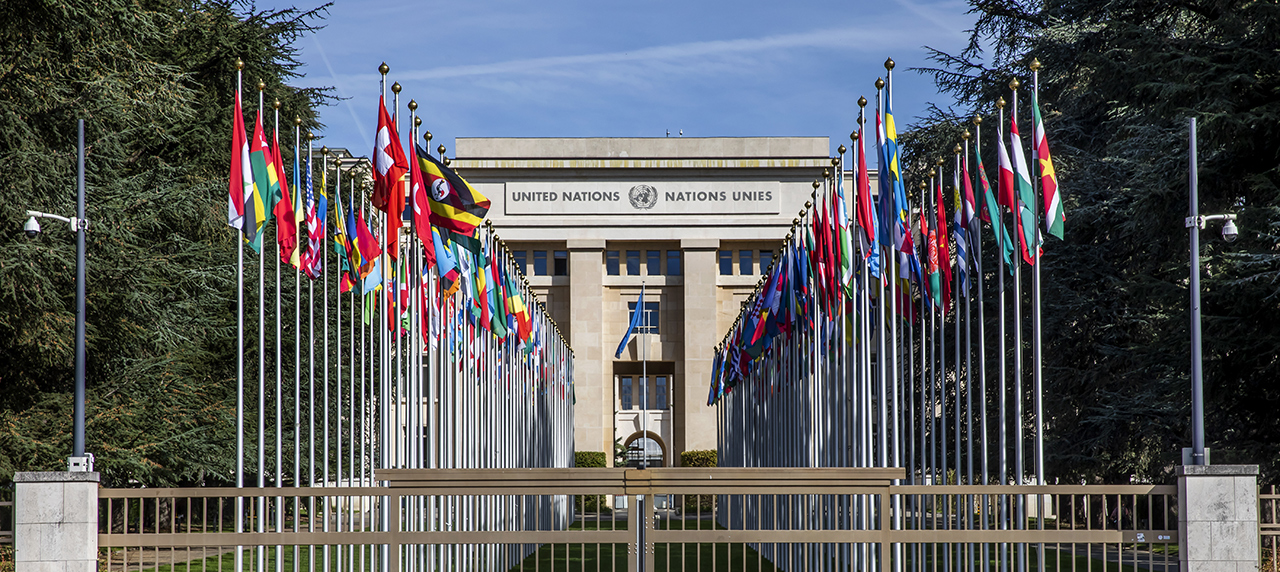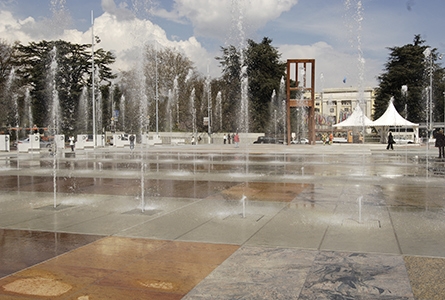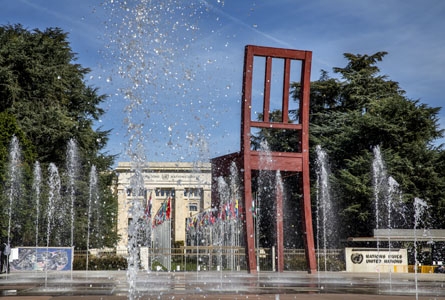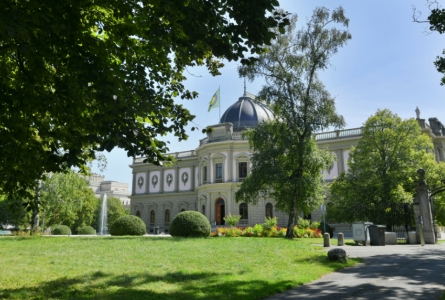A symbol of international Geneva, the Palais de Nations was built between 1929 and 1936 in the Parc de l'Ariana. Since 1966, the Palais has housed the United Nations Office at Geneva (UNOG). It is the most important centre of the organisation after the headquarters in New York.
The Palais des Nations is located in one of Geneva's most prestigious parks. It is a remarkable example of 20th century architecture.
The Palais is home to numerous global governance bodies in the fields of promoting respect for human rights, humanitarian assistance, disarmament, economics and development, and science and technology.
Access
The Palais des Nations is accessible by public transport:
- tram 15, Nations stop;
- buses 8, 11, 20, 22, F, Nations stop.
Activities
- Guided tours including the Hall of Human Rights and the Alliance of Civilizations, decorated by the artist Miquel Barcelò;
- The League of Nations Museum traces the history of the first intergovernmental organisation for peace and cooperation, from 1919 to 1946. Its archives were included in the UNESCO "Memory of the World" Register in 2009.
A little history
The Palais des Nations was built between 1929 and 1936 in Geneva's Parc de l'Ariana. Since 1966, it has housed the European headquarters of the United Nations, making it the UN's largest centre after its headquarters in New York.
Some 8,000 meetings are held here every year, making the Palais des Nations one of the largest diplomatic conference centres in the world. Most of the conference rooms date back to the original construction of the Palais des Nations in the 1930s.
The Palais des Nations in figures
- The complex is 600 metres long;
- 100,000 people visit it every year;
- Approximately 28,000 delegates are welcomed each year;
- More than 1,500 officials work here, representing nearly 120 nationalities;
- The building has 34 conference rooms and 2,800 offices;
- Approximately 9,000 meetings are organised each year;
- UNOG has installed 60 m2 of solar panels and 20 solar lamps;
- The UNOG art collection includes more than 2'000 works.
Article modifié le 22.09.2023 à 10:24





